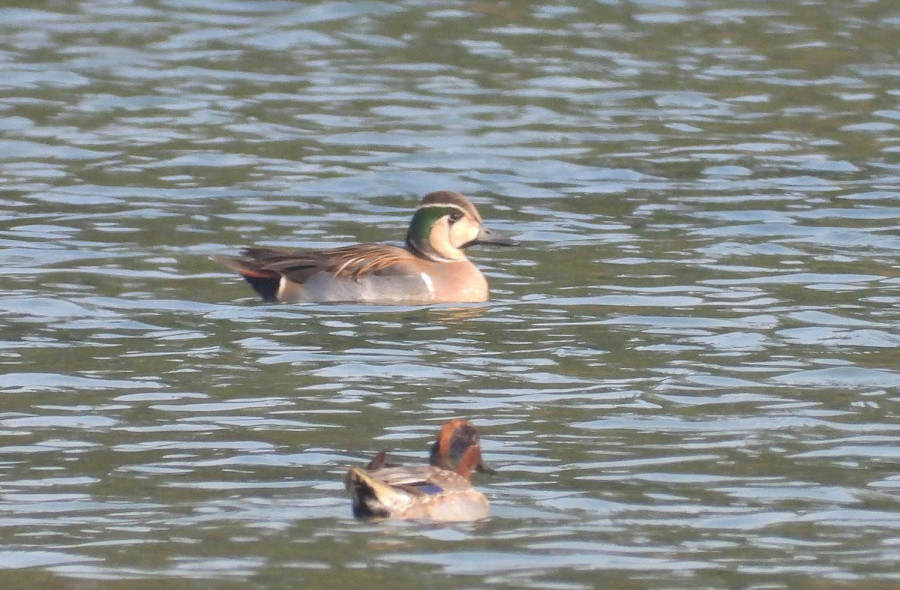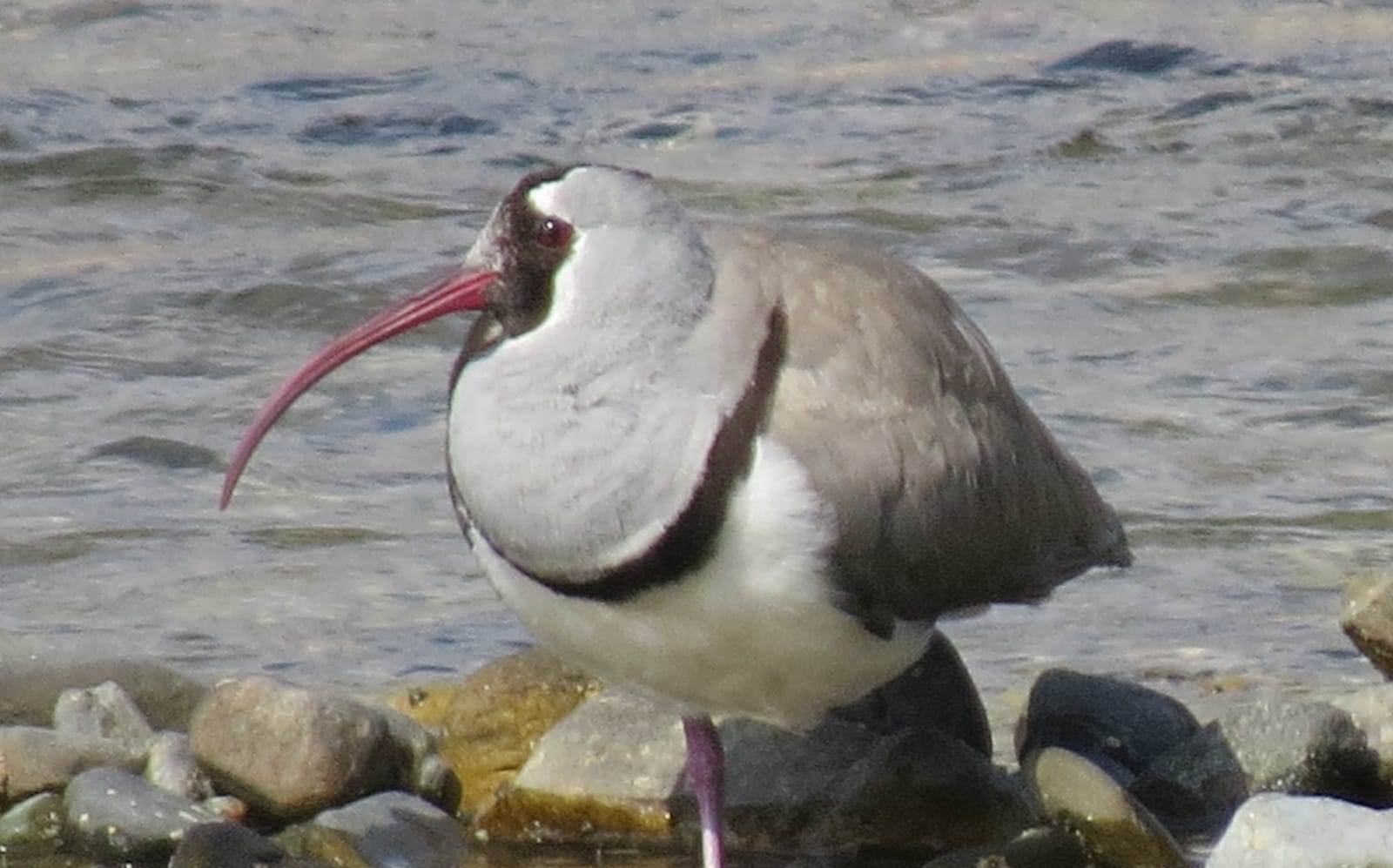National
Census shows rise in water bird species and numbers
Ibisbill, locally called Tilahari chara, sighted on Rapti River after 15 years. The bird’s return indicates improved water quality in Rapti, says expert.
Ramesh Kumar Paudel & Manoj Paudel
Bird conservationists mobilised for the nationwide count of water birds that kicked off in several parts of the country in the first week of January, have reported an increase in bird species. They also reported sightings of rare bird species in Chitwan. The bird count concluded on Tuesday.
In Chitwan, the counting of winter migratory water birds was started from Kasara of the Chitwan National Park to the Lothar stream from January 7. The census report was made public on Wednesday. The sighting of Ibisbill, locally called Tilahari chara, after 15 years, has made ornithologists and birding enthusiasts happy.
“This bird (Ibisbill) had not been seen in Chitwan for the past 15 years. We recorded four Ibisbills in the area this year. The bird’s sighting is very good news for us,” said Tika Giri, chairman of the Bird Education Society in Sauraha. Giri led a team of ornithologists, nature guides and volunteers deployed to count water birds in the eastern part of Chitwan.
According to Giri, the Ibisbill was sighted on the very first day of the bird count in the Lothar stream. Ibisbill is a riverine species generally found in the Makalu Barun National Park, Khaptad National Park and upper Langtang area in summer. They migrate to the Rapti River and lower Arun River in winter. The Ibisbill has a long reddish neck, a black face, and a black breast band.
“The bird species is found from the high Himalayas to the southern plains of the Bagmati Province. We have recommended that Ibisbill be declared ‘the bird of Bagmati Province,’” said Giri. According to him, the bird species is found in fresh flowing water and preys on small insects and their larvae. He suspected that Ibisbills sightings had become rare in Chitwan, possibly due to water pollution.
“Although Ibisbills are rarely seen in Chitwan, they are in good numbers in the upper stream of the Rapti River in Makawanpur,” he said.
Along with increasing pollution in the river, human activities, and excavation of riverbed materials have led to a loss of habitat for these birds, said Giri. However, the return of birds such as the Ibisbill to the Rapti River also indicates a decrease in water pollution in the river, said ornithologist Basu Bidari, the former president of the Bird Education Society which has been involved in counting birds in recent times.
“Not only Ibisbill but also Marsh Sandpiper (Tringa stagnatilis) locally known as Masino Thude Timtima, Chinese Spot-billed Duck (Anas zonorhyncha) locally known as Thopla Chuchhe Nadun Haans, and Greater Painted-snipe (Rostratula benghalensis) locally known as Chitrangad bird were not seen until last year. These birds have returned to Chitwan which is a good indication of a decrease in river pollution,” said Bidari.
In Chitwan, around 67 ornithologists, birding enthusiasts, nature guides and volunteers who were divided into eight teams that covered 10 different areas— rivers, wetlands, and ponds in the national park area—were involved in counting water birds.
According to the census, 53 species of migratory water birds were found this time whereas 49 species of birds were found last year.
“The species and number of birds fluctuate depending on the availability of food and environment,” said Bidari.
Another team was deployed to count water birds from Kasara to the West Rapti River in Chitwan, the Riu River in Madi, the Narayani area around Dibyanagar, and other wetlands in the surrounding area.
A few Baikal teal, locally called Baikalgairi, were also spotted in the Narayani River. Bird conservationists are happy as these rare birds were sighted in the river near Kawasoti Municipality of Nawalparasi East.
According to nature guide Man Bahadur Chaudhary, this is the eighth time in 40 years that Baikal teals have been recorded in Nepal. The bird species was earlier seen in the Kaligandaki River near Larjung of the Annapurna Conservation Area Project in 1984. It was sighted in the Koshi barrage in 1987 and 1989. In 2005, Baikal teals were recorded in Taudaha of Kathmandu, and in Barju Lake of Sunsari district in 2012, 2020 and 2021.
“We could not find more than two birds of Baikal teal species at a time in Nepal. It is estimated that there are only two to three birds of the species in the country,” said senior ornithologist Hem Sagar Baral. According to him, the bird species travel from eastern Siberia.

Similarly, this year’s water bird count in the Ghodaghodi wetland area in Kailali, a Tarai district of Sudurpaschim Province, has recorded an increase in the number of aquatic birds compared to last year.
According to this year’s census, 1,231 water birds of 36 species were found in the Ghodaghodi wetlands—a significant increase from the 855 birds of 17 species recorded last year.
Among this year’s 36 species, 13 including Lesser Whistling-duck (Dendrocygna javanica) locally known as Silsile, Chinese Spot-billed Duck (Anas zonorhyncha), Common Moorhen (Gallinula chloropus), locally known as Bagale Simkukhura, and Bronze-winged Jacana (Metopidius indicus), locally known as Lamaaaula, belong to indigenous species.
Migratory birds such as Greater Scaup (Aythya marila), locally known as Kalotauke Haans, Common Teal (Anas crecca) locally known as Bijul Gauri, Red-crested Pochard (Netta rufina), locally known as Sunjure Haans, Gadwall (Mareca strepera), locally known as Khadkhade Haans, were not sighted this year in Kailali.
According to Bird Conservation Nepal, there are records of 380 species of birds, such as aquatic birds, forest birds, grassland birds, farmlands, and open spaces birds, which are found in the Ghodaghodi Bird Sanctuary.
On August 13, 2003, the government listed Ghodaghodi on the World Wetland List.
According to ornithologist Hirulal Dagaura of Bird Conservation Nepal, in 2003, there were 20,000 aquatic birds in the Ghodaghodi area. It is recorded that more than 150 species of birds come here every year. In the winter months, birds from China, Russia, Mongolia, Europe, Korea, and the Tibetan region come to Nepal to escape the cold and in search of food. Similarly, birds from Central Asia’s Turkmenistan, Kyrgyzstan, and Siberia also come here.
“The birds that start coming in the last week of September return in March. Due to a lack of food and increasing human activities, the number of birds has decreased from 20,000 to 1,231 in two decades,” said Dagaura.
The counting of water birds commenced in 1967 around the world. Nepal has conducted water bird count annually since 1987.
(With input from Arjun Shah in Kailali)




 8.12°C Kathmandu
8.12°C Kathmandu1.jpg)














%20(1).jpg&w=300&height=200)

